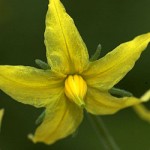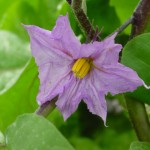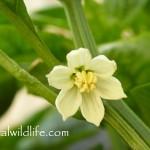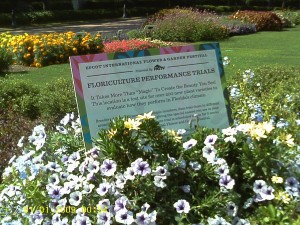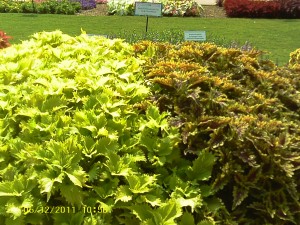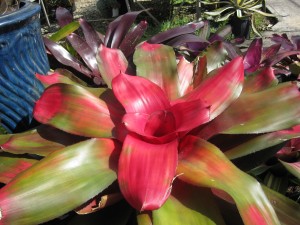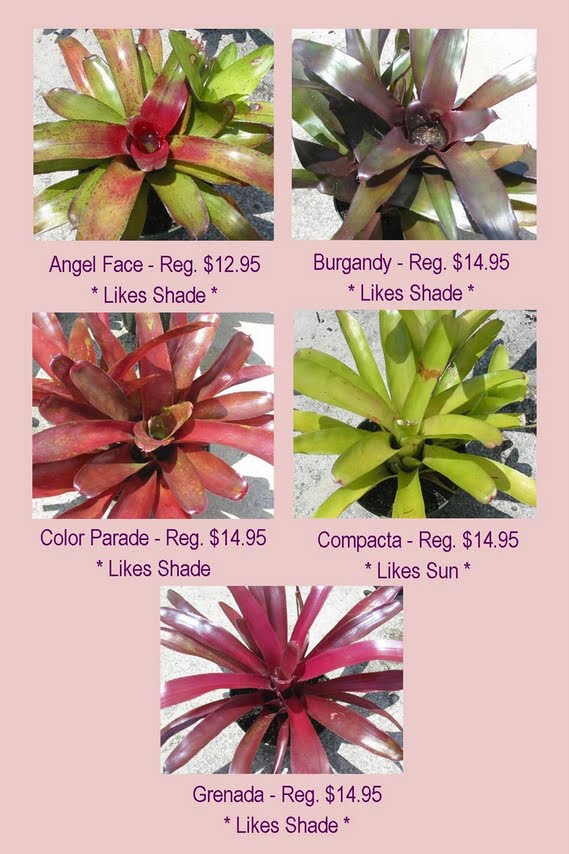Looks like we are going to start this year off with a bit of a scramble! After all the predictions for a mild winter we are facing a sudden drop in temperatures this evening into Tuesday morning and continuing through Wednesday morning. This on the heels of 75-degree days which is always risky business for us in Zone 10 Florida.
You see, like cold-blooded animals, plants don’t regulate their own temperatures, rather they are affected by the temperatures of the environment around them. In fact, these environmental temperatures regulate the plant’s rate of metabolism. So with warmer temperatures (over 72 degrees) the plant’s metabolism is active– their “sap is up” in the stems and leaves of the plant. Unfortunately, when temperatures drop suddenly the plant does not have the chance to “turn-off” by drawing down the nutritive juices. These juices will freeze if exposed to temperatures of 32 degrees or lower–expanding and rupturing the plant’s cellular membranes. The result? Soft or “herbaceous” plants will turn to mush as the stiff cell walls that normally provide structure are blown out-think Impatien Soup. Plants with woody characteristics (like shrubs and trees) will show the damage on their soft tissue–like leaves, and new growth. Even a light frosting can cause damage to a young plant, so here is what we are recommending you do:
First, be sure to give your garden a good soaking irrigation, then keep the water turned OFF until we get back up over 70 degrees (which may be this weekend). Once the plants’ metabolism kicks in, they will be thirsty to replace the moisture they will be losing to the wind that will be accompanying this cold-front.
Take a walk around your yard and identify anything that has been planted or pruned in the past couple of weeks. Look for flushing new growth on these plants since transplanting and pruning both encourage a flush of tender growth. This tender growth will need protection. You can cover these flushing plants (and established cold sensitive plants) with fabric – not plastic. You may even choose to cut up old sheets to fit your landscape bed. Use a laundry marker to mark each sheet with which bed it is tailored to fit. Consider placing bamboo stakes among your softer bedding plants to hold the protective fabric above the plants to eliminate the risk of damage due to the weight of and/or the friction of the fabric against the plants. The stakes can remain in place (they will really not be very visible) through the Ides of March (our last frost date) thus facilitating your donning and doffing the fabric as needed with each cold snap we may encounter this season.
Now look again at your landscape, do you have trees, shrubs or larger specimen plants that have been planted anytime since March of 2011? If the answer is yes, give these plants special attention since this will likely be their first exposure to winter cold. Consider the size of the plant when deciding whether or not to cover it. If we get 6 inches of penetrating frost (NOT predicted for this little snap) and your Hong Kong Orchid is 20-feet tall, then 6-inches of frost-burnt foliage probably will be tolerable for that tree. But if it is only 5 feet tall, six inches of damage could present a real challenge-that is 10% of the plant’s height!
Consider which plants in your landscape are “tropical” and therefore not typically cold-hardy. Some particularly cold sensitive cultivars are: Dwarf Ixoras and allamandas are more persnickety than their full-sized cousins, though all should be protected; tibouchinas-particularly the tree form (Tibouchina granulosa); young Royal Poincianas and Christmas Palms (Veitchia merrillii syn. Adonidia merrillii) tend to be the trees most often lost to cold stress (if not immediately than by late spring); Crotons (Codiaeum variegatum), Jamaican Crotons (Graptophyllum pictum) & Pseuderanthemum spp (like Black Varnish & Shooting Star) are just a few of the plants with ornamental foliage that are cold sensitive. For more information on specific plant cold tolerances we rely on the information you can find at Dave’s Garden (davesgarden.com) and Floradata (floradata.com).
Most importantly, we want you to understand that even if your plants get bit by the cold this winter, and even if they drop every leaf- they may not necessarily be dead. They may flush back out come spring-so don’t be too eager to dig them out. And since this cold snap is happening so early you will need to restrain yourself from cutting back anything but dead matter from your plants for fear that once cut they will flush new growth which will be even more susceptible to the ravages of infrequent cold of the Florida Winter.
Don’t fail to fertilize once Spring settles in. And don’t postpone fertilizing past mid-March. Cold stress taps out a plant’s reserves, but to fertilize in the cold would not help as cool plants = low metabolism = no fertilizer uptake. Even if we do warm up and the plants take on the nutrition, this is only likely to cause more flushing of tender young growth. Between now and March, stick to supplementing vital hormones and vitamins for strengthening a plant’s immune response- for this we recommend SuperThrive (www.superthrive.com). Then, when we warm up for good (early to mid March) don’t delay the fertilizer. With consistently warm temperatures, plants will enter a growth spurt-with nutrient reserves depleted by winter’s stress, plants can seem to be growing then suddenly collapse.
In your veggie patch your most cold sensitive plants are of the Solanaceae family: Tomatoes, peppers, eggplants and potatoes. Brassicas (brocolli, cauliflower, cabbages and the like) and lettuces will thrive despite cold temperatures. Likewise, citrus flavor is enhanced by a cold snap, but other tropical fruits can be devastated: annonas, Soursop, papaya, Jackfruit and Banana are just a few of the more cold sensitive fruit trees. Your Florida peaches and other low-chill stone fruits will love this weather! Again, check out Dave’s Garden and/or Floridata to determine the cold sensitivity of your own holdings.
Lastly, I want to share a tip from our friend Christopher Beck: Christmas lights help! Keep them glowing beneath your sheets to emit a little extra heat. Word of caution however: LED lights do not get hot-so if you have “gone green” with these low energy bulbs, I am afraid they will be little help in keeping you from going frosty!
Stay warm! And check out our previous postings on the topic of “garden freeze” for more information.

